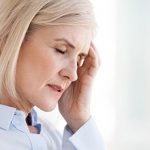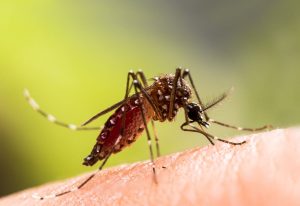For women experiencing menopause symptoms with no sign of relief in sight, it doesn’t have to be this way.
An expert in women’s health offers some suggestions for helping control symptoms during this time of life when menstrual cycles end.
“We sometimes hear the question, ‘Do I need to treat hot flashes or night sweats?’ and the answer for many may be, ‘yes.’ Because hot flashes and night sweats affect quality of life and productivity at work and at home for women,” said Dr. Jewel Kling, chair of the division of women’s health at Mayo Clinic in Scottsdale, Ariz.
Other common symptoms include insomnia and mood changes.
One treatment is hormone replacement therapy (HRT). This typically includes estrogen plus progestogen, according to a Mayo Clinic news release.
For women who are younger than 60 or within 10 years of their final period, the benefit of HRT outweighs the risk in healthy women who have postmenopausal symptoms, according to recent guidelines from the North American Menopause Society.
“Many factors affect a woman’s decision whether to use hormones and, if she uses them, which particular regimen is best to relieve her symptoms. Common factors considered include age, underlying health, symptom severity, preferences, available treatment options and, of course, cost considerations. One important consideration is whether the potential benefits outweigh the potential risks,” Kling said.
“Along with these benefits often comes improvement with menopause-related symptoms, including those most likely bothersome, including disturbed sleep, mood problems and diminished sexual satisfaction,” Kling added. “Addressing these symptoms can lead to a better quality of life.”
Still, risks include blood clots in the legs and lungs, as well as stroke, particularly when the HRT is taken as a pill.
“Stroke is dependent on the age at which a woman starts hormone therapy. Specifically, the risks are low for women younger than 60 or within 10 years after their last period,” Kling said. “There do not appear to be the same risks associated with transdermal estrogen products such as patches, particularly when we use lower doses.”
Other forms of treatment include gels and sprays.
While risk of using estrogen alone can carry a risk of uterine cancer, that risk can be reduced by using progestogen or an estrogen-selective estrogen receptor modulator combination, according to the Mayo Clinic.
Breast cancer is another risk that appears slightly higher with HRT, particularly in women with a uterus who use estrogen plus a progestogen.
“However, overall, the risk of serious events with hormone therapy are rare,” Kling said. “For women with only vaginal symptoms, low-dose vaginal estrogen can be used. Low-dose vaginal estrogen does not have the same risks as systemic therapy because the body absorbs very little.”
Some women have fewer options, including those with breast cancer, blood clot issues or other hormone-affected cancers.
For those women, nonhormonal therapies may help.
Losing weight may help reduce hot flashes and night sweats.
Low-dose paroxetine (Paxil) may help some women with symptoms such as hot flashes. It doesn’t appear to cause weight gain or have adverse sexual effects at low doses.
Cognitive behavioral therapy, clinical hypnosis, acupuncture, yoga and meditation may also help.
“There are many ways to help women deal with the discomfort and diminished quality of life associated with menopause,” Kling said. “Women don’t need to simply tough it out. They can get help.”
More information
The U.S. National Institute on Aging has more on menopause.
SOURCE: Mayo Clinic, news release, Jan. 19, 2023
Copyright © 2024 HealthDay. All rights reserved.

-300x200.jpeg)









-300x241.jpeg)




